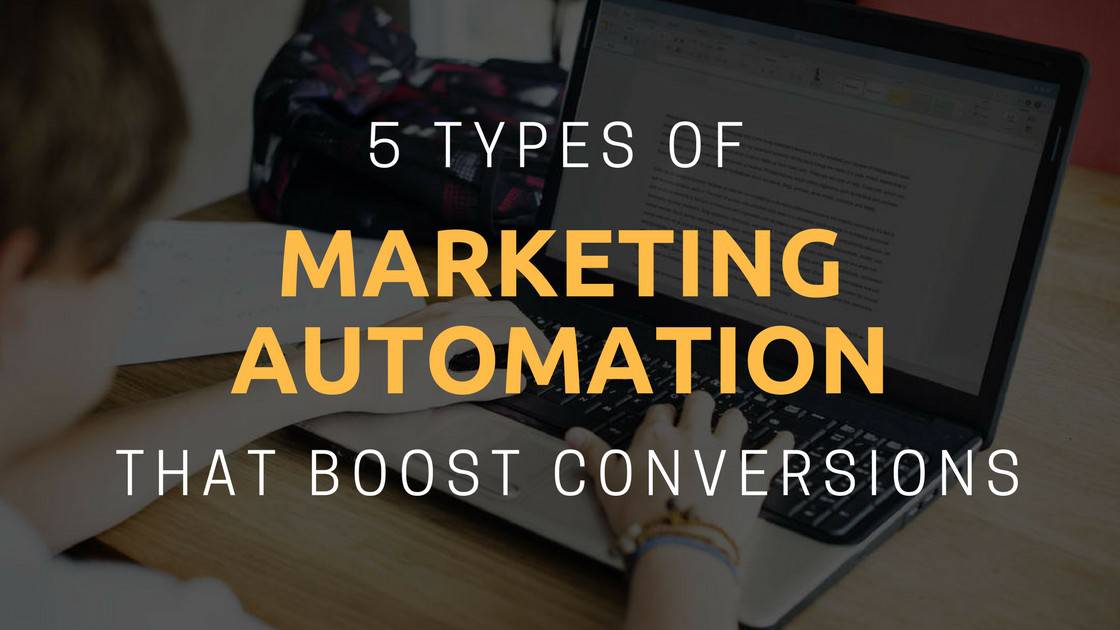5 Types Of Marketing Automation That Will Boost Conversions

I’m sure you’ll agree – the benefits of marketing automation are many.
For one, it helps alleviate repetitive tasks.
Marketing automation also helps nurture and convert leads more efficiently. And on autopilot, at that.
And it ensures that no leads skip through the cracks.
But there’s a catch:
Marketing automation strategies can be so hard to execute.
And that’s for countless reasons. For example:
- More than half of companies lack a marketing automation strategy (Source)
- Complexity of marketing automation software plays a part here too. (Source)
- And 45% of companies cite lack of knowledge about marketing automation practices as a challenge. (Source)
That’s why I want to help you pick the right type of marketing automation for you.
So without further ado, let’s get into our first type of marketing automation…
Inbound marketing automation strategy
Inbound marketing automation involves using tools that support activities like content management from end-to-end.
But who is this type of marketing automation for?
Ideally, you should use it if your marketing team relies heavily on blogging or producing content to generate leads.
One example of inbound marketing automation is setting up an email drip campaign.
“Email drip campaigns are a series of pre-written auto-generated emails which are executed when a new lead is added to a nurturing campaign or a current subscriber modifies their behavior and kicks off a nurturing email marketing campaign.
Companies that excel at drip marketing generate 80% more sales at 33% lower costs.”
(Source)
Here’s an example of what email workflows look like in Hubspot:

(Source)
By downloading or reading specifically categorized content, your inbound marketing tool will distribute leads into interest-based email campaigns.
And then, email workflows will share relevant content with your segmented leads.
Now you’ll only be sharing content your leads are interested in.
As an added benefit, your team won’t have to manually reach out to leads at every nurture milestone.
Lead management and nurturing automation strategy
If generating leads is one of the biggest priorities of your day-to-day, this next type of marketing automation is for you.

(Source)
The strategy with this type of marketing automation is using a tool that automates the cycle of acquiring and qualifying leads for sales.
That means the tool can help you identify and reach out to leads that are most likely to buy.
According to Smart Insights:
“Companies focusing on lead nurturing, generate 50% more qualified leads.” (Source)
But I bet by now you’re thinking, “well, that’s great but how will the tool know when there’s a hot lead”.
Good question. It’s up to you to tell the software what your marketing team defines as a qualified lead.
For instance, if you defined a qualified lead to be “someone that visits the demo page more than 2 times”, here’s what lead marketing automation can do for you.
Your lead management tool will allow you to set the action you want to trigger. That is, when someone visits your product demo page twice, this automated action will occur.
In this case, you might want to trigger an internal sales notification. And with this, perhaps an automated email to remind your lead of the visit.
While it’s important to reach out to all leads, prioritization will help you convert more often.
Pricing automation strategy
So many companies overlook pricing automation or yield management.
And greatly miss out.
It’s a type of marketing strategy companies can use to charge the highest possible average price depending on your customers’ willingness to pay.
You might be familiar with the concept because that’s how airline seats and hotel rooms are priced. So now you’re thinking, “yeah but we’re not an airline or hotel.”
Fortunately, that’s not the only effective use case for this type of marketing automation.
Consider this your end marketing goal: you want to leverage different pricing to attract more buyers.
But how??
Let’s assume you run marketing for an ecommerce site. The biggest challenge you face is cart abandonment. A pricing automation strategy can be the solution.
If leads are abandoning their carts at checkout, it might be because of pricing.
A pricing automation tool would detect this and trigger emails with information on price drops.

(Source)
At the same time, if a product becomes popular, your pricing automation tool will be able increase prices as well.
And if you don’t believe that more people will buy during a price hike, then consider this:
Interestingly enough, an experiment by MIT and the University of Chicago, tested a standard women’s clothing item priced at $34, $39, and $44. And the results? The item sold best at $39, even more than the cheaper $34 price.
If you want to take this one step further, you can. A pricing automation strategy can be extended into your advertising strategy.
Just imagine you didn’t have the email of you leads. Instead of emailing them about the pricing changes, you can reach them through Google Ads.
Advertising automation strategy
Wouldn’t it be great if it only took a single ad to convince your leads to bu?
Unfortunately, that’s rarely the case, and your marketing team probably needs to boost your ads performance.
The point of advertising automation is triggering a series of relevant ads for segmented leads.
So this is connecting automation with whatever advertising tool you’re currently using. Whether it be Facebook ads, Google Adwords or Twitter ads—automation can still boost your advertising ROI.
“When it comes to paid social media ads, the overwhelming majority use Facebook ads (84%), followed by Google ads (41%) and LinkedIn ads (18%).” (Source)
A great example of advertising automation is when Facebook and Salesforce collaborated to nurture Facebook ad leads with email.

(Source)
They were able further automate the email nurture process for leads that have interacted with with an unnamed retailer’s Facebook ads.
This experiment found that leads who interacted with both ad and email were “22% more likely to purchase” than the ones who only got an email but but not the ad.

(Source)
Sounds pretty promising right? That’s because a combination of advertising with targeted automation can scale already effective marketing strategies.
Conclusion
Regardless of your marketing goals, there will always be a type of marketing automation to meet your needs.
Even if you don’t intend to make marketing automation a large part of your marketing strategy, using it as a supplement alone can help increase conversions on a product that might be currently on the back burner.
Let me know what automation strategies are you currently using. I’d love to know!
And which types we talked about today are applicable to your current marketing strategy?
Do you need someone to help you achieve your growth goals - then let us help you crush them? Let's chat!
Error: Contact form not found.









